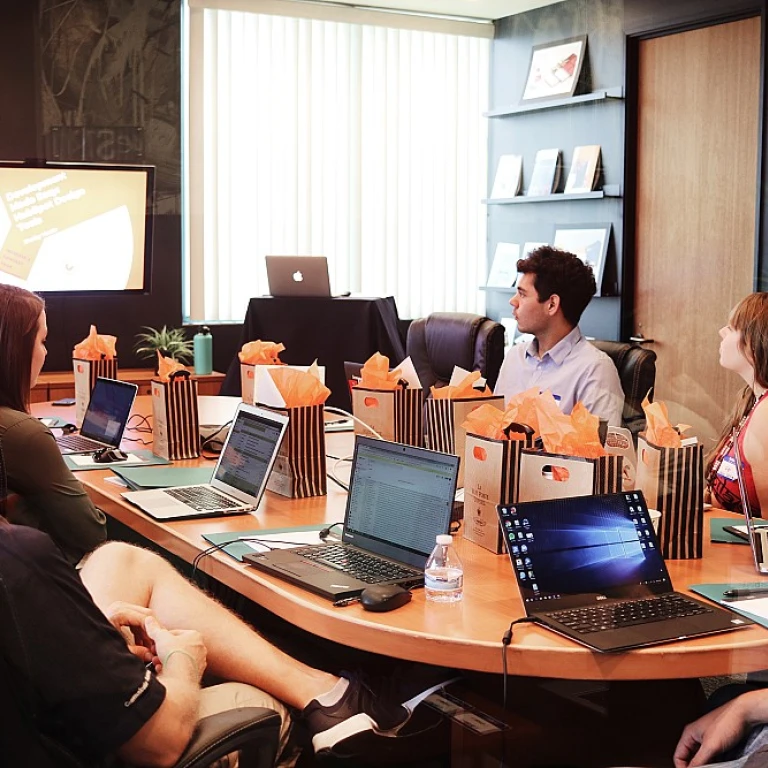
The Hierarchy of Leadership Roles
Hierarchy in Leadership Structures
Understanding the hierarchy within leadership roles is crucial for any organization to thrive. This hierarchy often extends beyond the typical supervisor roles. While supervisors and managers play essential roles in directly overseeing team members and ensuring day-to-day performance, higher leadership roles involve more complex tasks and decision-making responsibilities. In many organizations, leadership roles are tiered to provide a seamless transition of responsibilities. Below are some levels to consider:- Supervisors and Managers: These roles are typically the first tier of leadership, responsible for overseeing employee performance, facilitating training, and ensuring that the team meets its objectives. Their focus is often on direct interaction with their team members, providing guidance and solving immediate problems as they arise.
- Superintendent Supervisors and Mid-Level Managers: These positions bridge the gap between daily operations and senior management. They play a key role in executing higher-level directives, refining strategies, and ensuring alignment with the company’s goals.
- Senior Management and Executive Leaders: These roles involve crafting the vision and strategy that guide the company. Decision making at this level requires extensive leadership skills, focusing on long-term goals and sustainability.
Key Responsibilities of Higher Leadership
Responsibilities Distinguished by Position
The responsibilities of those in higher leadership roles are significantly more comprehensive than those of supervisors. While supervisors and managers often focus on overseeing daily operations and ensuring team members meet immediate objectives, those in higher leadership positions typically report to senior management or the board and carry a broader set of tasks.
Strategic Planning and Vision Development
Leaders at higher levels are tasked with the creation and implementation of long-term strategies. This responsibility requires a deep understanding of the company's mission and a vision that aligns with it. Their role in crafting and communicating this vision to employees is crucial, as it sets the direction for the organization and informs the goals of supervisors and managers.
Complex Decision Making
Advanced leadership roles demand enhanced problem-solving skills and the ability to make decisions that impact the entire organization. Unlike supervisors, who may focus on tactical decision-making, higher leaders oversee strategic decisions—often involving significant resource allocation, financial risks, and long-term impacts on company culture and performance.
Leadership Development and Organizational Culture
Leaders beyond the supervisory level are responsible for fostering a healthy organizational culture and spearheading leadership development initiatives. This involves mentoring supervisors and managers, implementing leadership training programs, and ensuring the continual growth of the leadership pipeline. As explored in leadership theory and practice, understanding these aspects is crucial for effective organizational management.
Performance Management and Oversight
Performance oversight at this level goes beyond individual or team performance. Leaders must evaluate the comprehensive performance of the organization, adapting strategies for improvement and holding senior management accountable. They are responsible for setting key performance indicators in collaboration with managers and supervisors, ensuring that everyone is aligned towards achieving the broader company objectives.
By understanding these key responsibilities, individuals can better prepare for the expectations placed upon them as they transition to leadership positions beyond supervisory roles.
Skills Required for Advanced Leadership
Fostering the Skills Necessary for Advanced Leadership
Stepping into higher leadership roles such as those typically associated with senior management positions requires more than managing day-to-day tasks. As one moves from being a supervisor manager to a leader influencing company-wide decisions, a rather different set of skills comes into play. One key component of developing these advanced leadership skills is mastering decision making at a strategic level. Advanced leaders must make choices that not only solve present problems but also anticipate future challenges, ensuring sustainable growth. This includes honing one's problem-solving skills to tackle complex issues that arise from various aspects of the organization's operations. Another vital skill is effective communication. It goes beyond mere passage of information and involves inspiring team members, aligning them with the company's vision, and clearly articulating expectations and objectives to promote top-notch performance. For leaders than supervisors, this means adapting communication styles to suit diverse situations and stakeholders. Additionally, emotional intelligence is indispensable for anyone in a leadership role. It involves managing one's emotions and understanding the emotions of others, which fosters strong workplace relationships and enhances team dynamics. As leaders typically report higher up in the hierarchy, they must exhibit emotional intelligence when interacting with robust personalities within and outside their organizations. Leadership training programs often highlight the importance of fostering collaboration and mentorship. Leaders are expected to cultivate a culture that encourages team members to pursue growth and innovation, thereby enhancing overall performance. Developing these skills requires dedication and a strategic approach to leadership development. More insights on how leaders are trained and transformed can be explored in how Greg Glover is shaping societal change through leadership.Challenges in Transitioning to Higher Leadership
Overcoming Hurdles in Advancing to Upper Management
Transitioning from a management role to a higher leadership position presents its unique set of challenges. While supervisors may excel at directing tasks and managing team members' performance, moving into senior management entails navigating a more complex landscape. The journey involves shifting focus from immediate results to long-term objectives, which requires a profound alteration in mindset and approach.
One major obstacle is adapting to the strategic decision making required at this level. Leaders must hone their skills in critical thinking and problem solving, going beyond the day-to-day operations managed by supervisors. They have to grasp the broader vision of the company and align their team's goals with organizational objectives. This involves understanding what makes a manager leader rather than just a manager supervisor.
Another challenge lies in managing a diverse set of roles and responsibilities. As leaders progress, they are required to build and nurture a cohesive team capable of reaching these aligned goals. Administrative tasks typically report to the leader, demanding adeptness in balancing operational details with strategic foresight. Performance management also becomes more intricate, focusing on personal growth of employees and efficiency improvements.
Building leadership skills through ongoing leadership training can ease this transition, equipping aspiring leaders with the necessary tools to thrive. An effective leadership development strategy emphasizes learning by doing, encouraging leaders to engage in the practical application of theory in real-world settings.
Lastly, communication skills are crucial to overcoming these challenges. Leaders must articulate their vision clearly to managers and supervisors, ensuring everyone is on the same page. Open lines of communication are essential in fostering an environment of trust and cooperation, allowing the organization to thrive collectively.
Leadership Development Strategies
Strategies for Leadership Growth
Transitioning into higher leadership roles requires a strategic approach to development. Here are some effective strategies that can help managers and supervisors enhance their leadership skills and prepare for advanced roles:
- Continuous Learning: Engaging in ongoing leadership training is crucial. This includes workshops, seminars, and courses that focus on advanced management skills, decision making, and problem solving. These programs are designed to equip leaders with the tools they need to handle complex tasks and improve team performance.
- Mentorship and Coaching: Seeking guidance from experienced leaders can provide invaluable insights into the nuances of higher-level leadership. Mentors can help aspiring leaders understand the key differences between managers and supervisors, and how to effectively manage employees and team members.
- Networking: Building a network of peers and senior management can open doors to new opportunities and provide support during the transition. Networking allows leaders to share experiences, learn from others, and gain different perspectives on leadership roles.
- Practical Experience: Taking on challenging projects or temporary roles can help leaders gain firsthand experience in higher-level management. This practical exposure is essential for understanding what it takes to lead at a senior level.
- Feedback and Self-Reflection: Regular feedback from peers, supervisors, and team members can highlight areas for improvement. Self-reflection on one's leadership style and performance is also critical for personal growth and development.
By implementing these strategies, aspiring leaders can effectively prepare for the challenges of higher leadership roles and enhance their ability to lead teams and organizations successfully.












